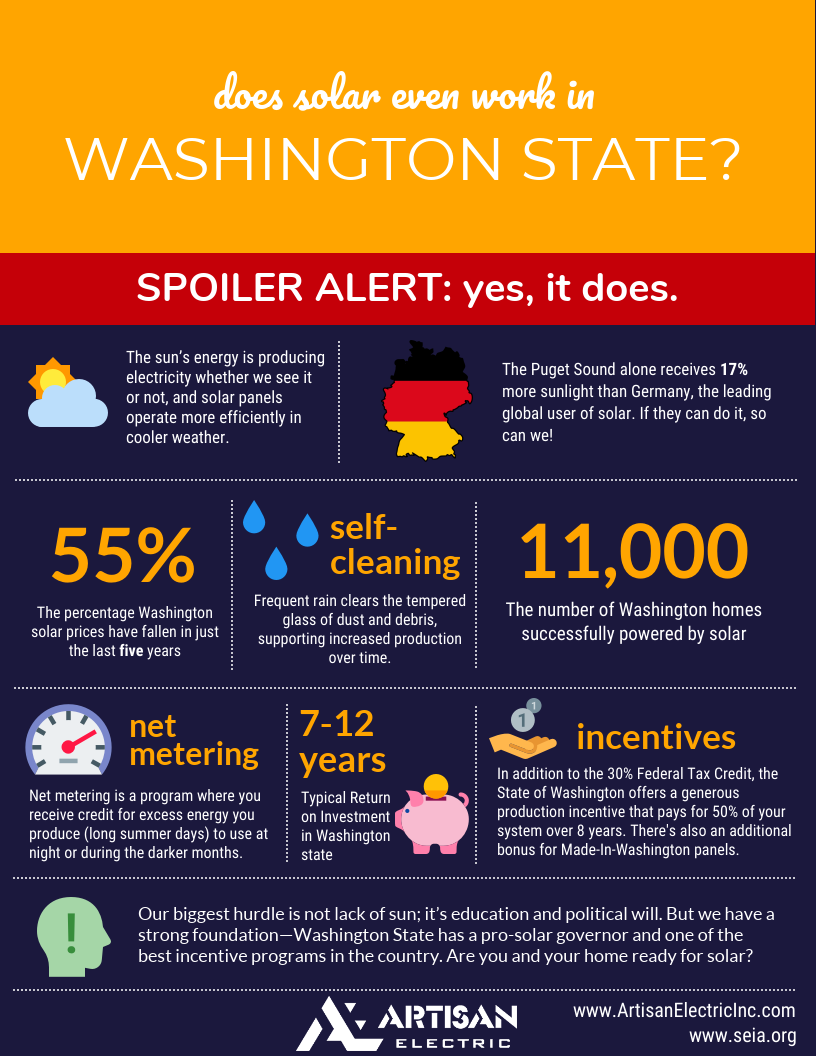A Cooler Climate is Better
The cooler Western Washington climate is ideal for Seattle solar panels, as they are less prone to efficiency issues and malfunctions than in hotter climates. According to Clean Energy Authority, “as temperature in a conducting material increases, quasiparticles, called phonons, are excited and move throughout the material, impeding the uniform movement of electrons.” This can lower the efficiency of panels from 10-25% depending on extremity of heat. But heat isn’t the only issue that could hurt soar panel efficiency. Dust buildup can act as shading and has been shown to decrease solar output by 25% in some places. This means that panels require maintenance much more frequently than the annual cleanings we prescribe to our customers. The frequent rain we receive in the Puget Sound makes it so one cleaning per year is all it takes to rid systems of moss and other debris.
Consider Germany
Germany is a world leader in solar energy production, only behind China and Japan. But Western Washington receives 17% more sunlight than Germany. If a gloomy country roughly the size of Montana can make such an impact, so can we!
Incentives
The state of Washington also has some of the most generous incentives in the country. For residential systems, the state will cover up to 50% of the cost over 8 years. There is an added bonus for panels made in Washington, as well. These incentives coupled with the 30% Federal Tax Credit make the average Return on Investment 7-12 years.
Net Metering
We also have a strong net metering program. During the long summer days when sunlight is high and usage is low, your system will produce an excess of power. This excess goes back into the utility grid and you receive a 1:1 credit for every excess watt you produce. You can then redeem those credits in the dark winter months when sunlight is low and usage is high. This is an effort that has made solar possible for thousands of homes in Washington.
Conclusion
Our biggest hurdle is not lack of sun; it’s education and political will. But we have a strong foundation—Washington State has a pro-solar governor and one of the best incentive programs in the country. Are you and your home ready for solar?


